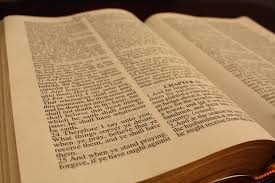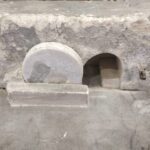The scriptural texts for today summons us to a Post-Easter encounter of what we now ought to be doing in the light of the reality of the power of Jesus’ resurrection. We are called to experience and manifest concrete implications of what happens when Jesus appears, when resurrection takes hold of our lives and community. In the Gospel, we read about the reality of resurrection when Jesus appears to us. Mary is our first consideration of what happens when Jesus appears to us. According to the resurrection account, Mary was seating outside the empty tomb weeping and looking into the empty tomb in vain. She was passionate in her search for her Lord and until she turned her focus from seeking the help of man to see Jesus standing very close to her. The truth is that the presence of angels must not be taking for Jesus’ presence. The moment Jesus appeared to Mary, her cry stopped and she left the outside of the empty tomb to spread the Good News to those under closed and locked doors. When Jesus appears, our focus shifts from pleasing man to seeking God and spreading the Good News to others. Mary’s movement from weeping and seating outside the tomb in false expectation changed to a courageous evangelist saying to others, “I have seen the Lord.” Our living and leading others in the power and reality of resurrection is based on our encounter with Jesus.
When the Jesus appeared to the disciples breaking the barriers of their prison house and locked doors, they also changed from hiding in fear to become the courageous witness with the gift of peace offered by the empowering breath of the Holy Spirit. Beloved, when we shut the door of our mind and heart, we imprison ourselves. The disciple locked themselves out against the reality of the resurrection even when Mary Magdalene announced to them, “I have seen the Lord.” Today the church is locked with the same place over the years, the same people in the same walls, the same closed doors, and the same locks. When we lock ourselves against the reality of resurrection, we shut the doors of our life, our mind, our heart, our growth and we imprison ourselves waiting for death. The reality of resurrection is that Jesus’ tomb is open and empty, eager for people to come and see so as to experience the good news and tell others. The reflection is that while the disciples’ house is closed and the doors locked tight, Jesus’ tomb is open and empty.
It is possible for the church to lock the doors of our faith for fear of the world thereby separating ourselves and our members from the reality of Jesus’ resurrection. Jesus is on the loose but the disciples were bound in fear just as the church today is bound in fear of persecution, name calling, and suffering. We do not live the reality of resurrection, when we shut our eyes to the life of power and holiness. When we do not live the reality of resurrection when we lock out words of faith just as the disciples locked Mary Magdalene’s words of faith, hope, and love. Just as the disciples ‘left the empty tomb of Jesus and entered their own tombs of fear, doubt, and blindness,’ the church today have entered our own different tombs of routing activities and the locked doors are working against new life and church growth.
Post-Easter existence without a change in the life of the church is tragic. The house described by St John points to ‘the doors, the locks. John ‘is speaking about more than a physical house with walls, doors on hinges, and deadbolts. He is describing the interior condition of the disciples. The locked places of our lives are always more about what is going on inside of us than around us.’ Among other things that kept the disciples in the tomb was fear, sorrow, loss, and disbelief. For others it may be anger, pride, resentment and ‘unwillingness to open to new ideas, possibilities, and change.’ Living and leading in the power of resurrection summons us to allow Jesus who ‘is always entering the locked places of our lives. He comes ‘eastering in us.’ Unexpected, uninvited, and sometimes even unwanted he steps into our closed lives, closed, hearts, closed minds. Standing among us, he offers peace and breathes new life into us. He doesn’t open the door for us but he gives us all we need so that we might open our doors to a new life, a new creation, a new way of being.’ It is possible to shout “Alleluia, Christ is Rise. The Lord is risen. Alleluia” and still be locked indoor just as some people shouted Hosanna and later changed to crucify him.
To live and lead in the power of resurrection calls for a change and not just be in the same place like the disciples who one week after the Easter night were still in the same room behind the same locked doors (Jn 20:19-31). Are you still stocked in the same condition like Thomas? If the empty tomb can changed a doubting Thomas to a confessing Thomas, the power and story of resurrection must make a difference in your life, church and nation. Living and leading in the power and story of resurrection invites us to a radical change, renewal and growth rather than being stuck in the same place or living and leading indifferently.
Beloved, Resurrection is not abstract, it is a process of spiritual practice and growth into maturity, hence when Jesus appears invites us to a new way of being and a life to be lived. When Jesus appears, it is no longer safer or possible to lock the door of our heart or hide from the reality of eternal life. Doubting Thomas unlock his door of unbelief as Confessing Thomas saying, “My Lord and my God.” When Jesus appears, we enters into a new relationship, a new worldview, a new way of being like Mary, the disciples, and Thomas.











Recent Comments